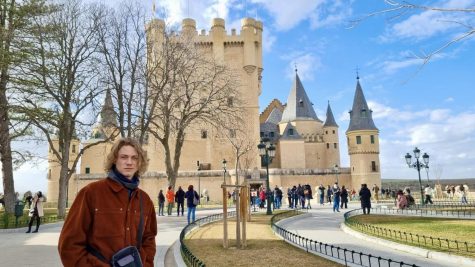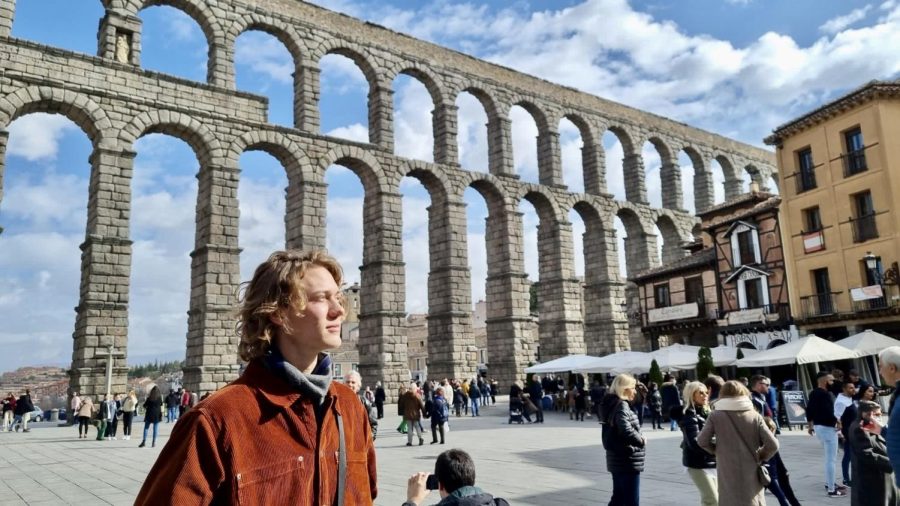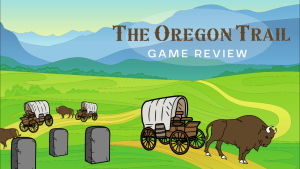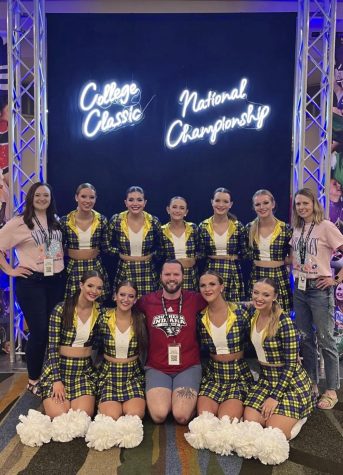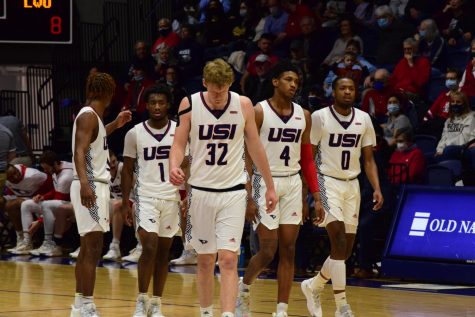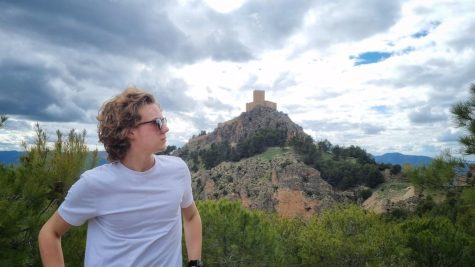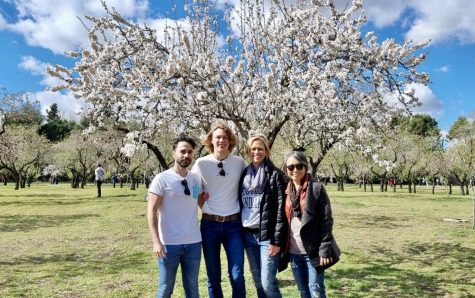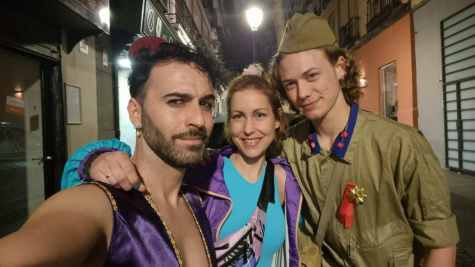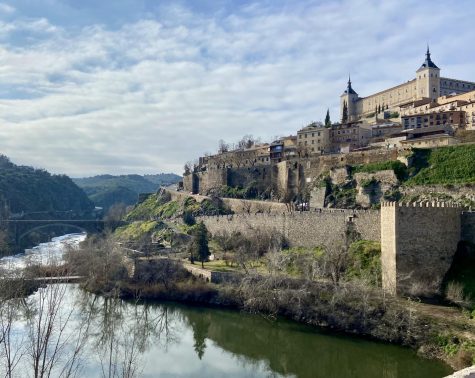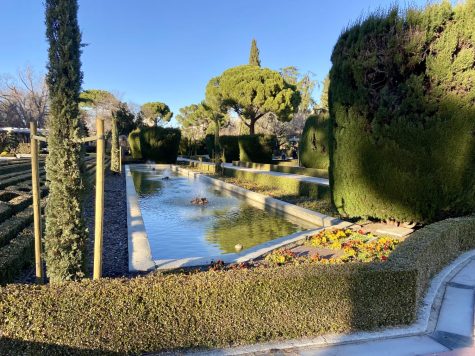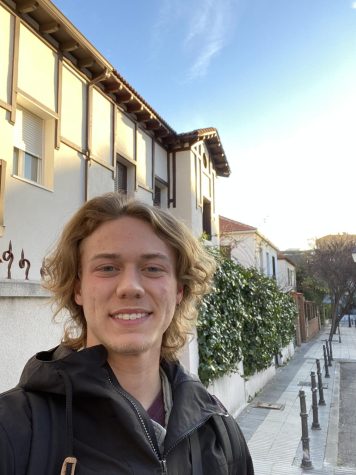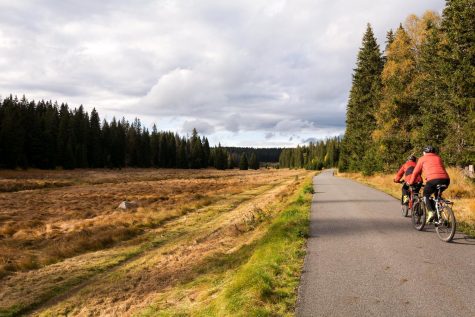Chase-ing Spain: Romance in the air
The Aqueduct of Segovia. In this week’s column, Chase visits old friends and sees the breathtaking sights of Segovia and Paris.
February 23, 2022
¡Hola! Or maybe I should say, “Bonjour!” The first weekend of this month of love, I had the chance to go to Paris, France, the city of romance to see the city and visit my friend Salomé who I had not seen in two years. I also took a trip to Segovia, Spain, famous for its alcázar, Roman aqueduct and cathedral.
At 12:30 p.m. I arrived in Paris and immediately headed for the train station connected to the airport. The journey to my friend’s house should have taken around an hour, but that was far from how it went.
On my second transfer, the train was supposed to arrive in fifteen minutes, but as I was standing at the platform, 15 minutes went by with no appearance of a train. I looked toward the board announcing arrivals of trains and saw the word “supprimé.” I then realized how important this word was because its meaning is “canceled.” For me, this meant I would have to wait another 45 minutes for the next train in the cold, rainy Parisian climate.
With my phone about to die, my hands freezing and a bit wet, I boarded the train and arrived at 3:30 p.m. to my friend’s house. Thankfully, from this point on it was smooth sailing and no more problems came my way.
That night we ate a typical French dish with Salomé’s family that consisted of potatoes and various cheeses and hams. The dish was called raclette. You prepare it by first heating up an individual piece of cheese and then pouring it onto your plate to eat it with the potatoes and ham. After dinner, Salomé and I went to a local place in Versaille to meet up with her friends and hang out. While they practiced their English skills with me, I tried to keep up with the French words that I could recognize in their conversations.
My first day visiting Paris, I was able to see the Pantheón, the Notre Dame, the Luxembourg Gardens, the Louvre Museum and finally the Arc de Triomphe. Each of the buildings was impressive and different, from the Roman feel of the Pantheón, to the enormity of the Louvre, the intricate gothic design of Notre Dame and the views of the city from the top of the Arc de Triomphe.
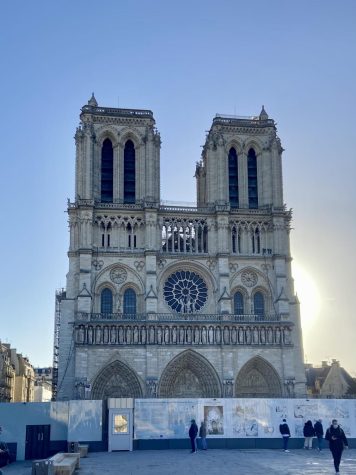
The following day in France was planned full, with a visit to the Palace of Versaille and its expansive grounds, and then a trip into Paris for a boat tour near the Eiffel Tower.
Combating the wind and rain, Salomé and I trekked through the gardens to a restaurant that served us crepes and French waffles in the middle of the gardens of Versaille.
We toured Le Grand Trianon, a building decorated with pink marble and adorned with a beautiful garden of its own that was used by King Louis XIV and his chief royal mistress at the time (a place for the King and his mistress to spend some alone time away from the queen).
Later in the afternoon, we made our way towards the Eiffel Tower and then headed to our boat tour, where we saw many parts of the city. We had a great view of the city at night and then further along on the ride we were able to see the twinkling Eiffel Tower.
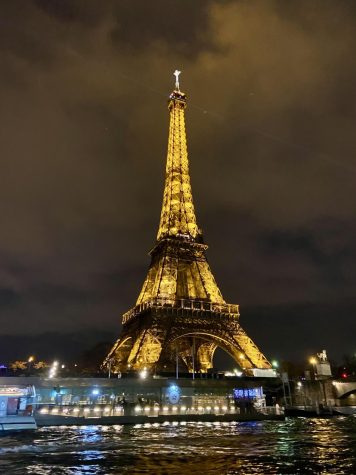
My journey to Segovia went nearly as smoothly as did the one to Paris. That’s to say it didn’t go smoothly at all. We started the day by missing our train departing Madrid. However, we remained optimistic, booked the next train and sat for some breakfast as we waited for the following train.
Upon arriving in Segovia, the landscape caught my eye with the backdrop of snow capped mountain peaks overlooking the valley. Taking a short bus ride to the center, we were then standing in front of an ancient Roman aqueduct built around 50 B.C.
Walking through the city, the antiquity continued to impress with its many churches and buildings of similar architecture. The food in Segovia comes from a history of hard labor and therefore the plates are hearty and full of calories. For lunch, I first had a large bowl of judiones* with different types of sausages included. The second plate was a piece of the delicious cochinillo* with potatoes. Then came a dessert of chilled apple cake to top it all off.
After lunch we headed to the famous Alcázar de Segovia, a fortress that was used as a model for the Disney castle of Snow White. Inside the building, there were exhibitions of old weapons such as mortars and cannons as well as knight’s armor that truly gave the sense of medieval battle.
Our visit to the Alcázar ended with us climbing the winding staircase up the tower to overlook the city. We had an amazing view of the cathedral set in the city center with the impressive mountains looming in the background
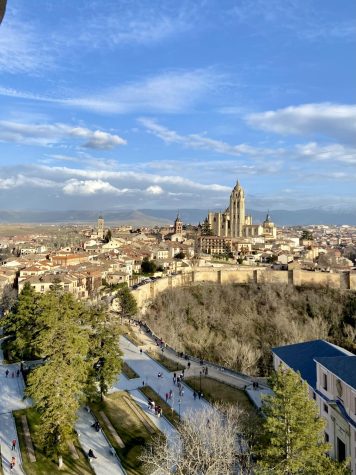
Our trip ended with a rushed tour of the cathedral and a quick trip to buy ponche segoviano*, one of the must try desserts of Segovia. Sitting at the train station waiting to board, we ate our ponche (making a mess with all of the powdered sugar) and then continued back home to Madrid.
These trips were nothing short of impressive, and both have left me already wanting to return. I’m not sure where my next adventure will be, but until then I will be busy celebrating Carnival in Madrid.
Judiones = a large white variety of beans
Cochinillo = roasted piglet
Ponche Segoviano = typical dessert made with marzipan
